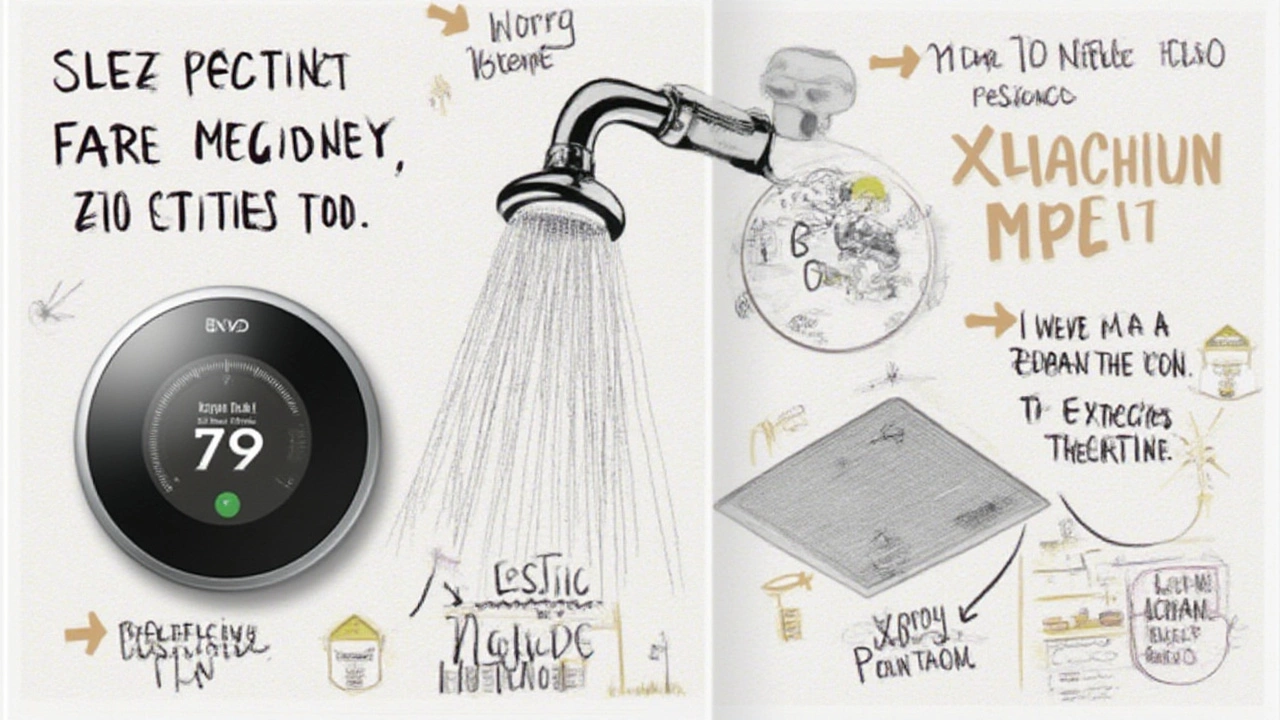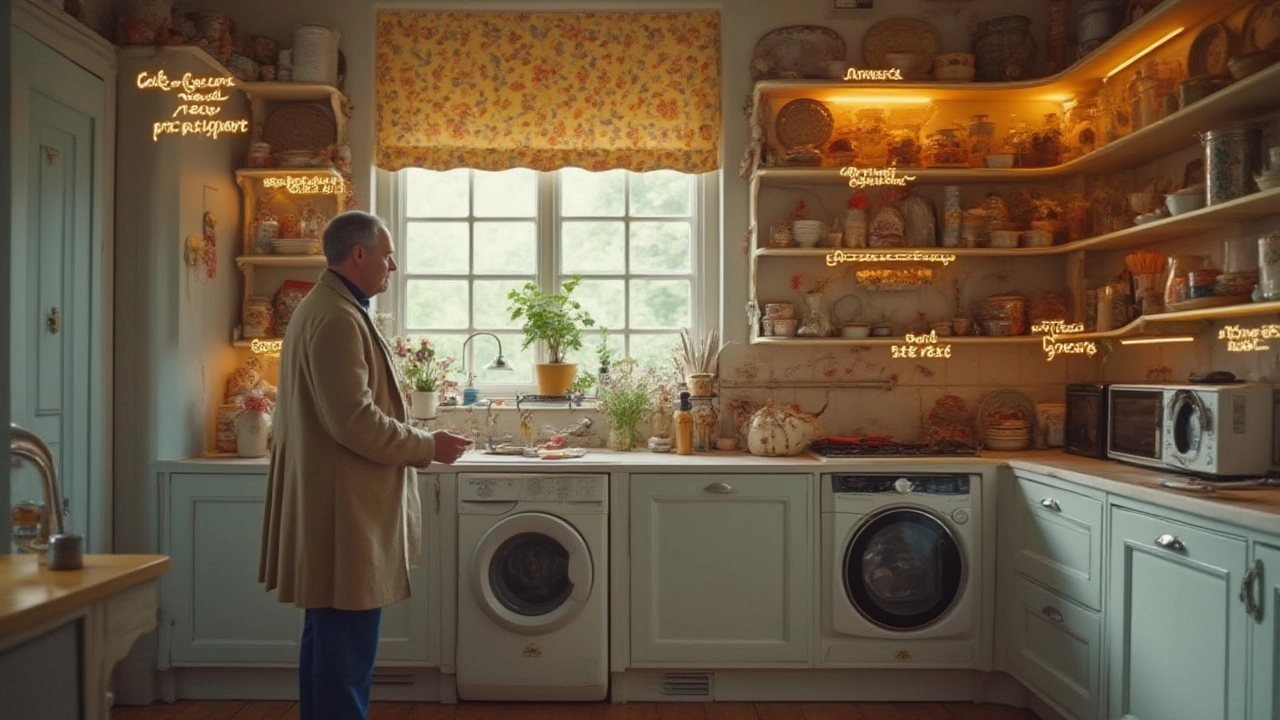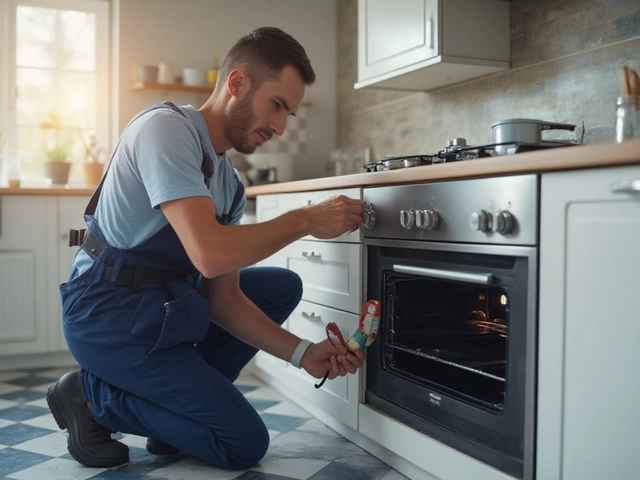Ever tried to argue with your partner about whether the kettle counts as an “appliance” when it breaks? Or stood in a hardware store, lost in the rows of boxes, and realized you’re not even sure what technically makes something an appliance? You’re not alone. My son Callum once claimed that his Xbox should count as an appliance (nice try, mate), and my daughter Tamsin said her fairy lights should too. It’s actually a surprisingly fuzzy area, with some things clearly appliances and others, well… not so much. Let’s break it down in a way you’ll actually remember.
What Makes Something an Appliance?
The official definition of "appliance" usually talks about a device or piece of equipment that does a particular job, especially when it’s powered by electricity, gas, or water. But that leaves a lot of grey areas, doesn’t it? The core idea is this: an appliance is a tool or machine that helps you do something at home. Refrigerators, ovens, dishwashers—they fit. Toasters, blenders, coffee makers—yes, they count. Your TV, game console, or lamp? Not exactly. But why not?
The real heart of the definition for home use is about the function and purpose. Appliances help with chores or fundamental activities: keeping things cold, cooking, cleaning, heating, cooling. They are usually separate devices (not a whole built-in system like wiring or plumbing), and they usually need an energy source—a plug, a gas line, or in rare cases, batteries.
Some dictionaries say appliances are “devices used to perform household functions,” and that matches what appliance repair technicians work on. The Home Appliance Manufacturers Association breaks them into "major" (large things like fridges and washing machines) and "small" (countertop gadgets like kettles and food processors). Both types share the feature of having a defined, often repetitive function—think cleaning, cooking, preserving, or personal care.
One fun fact from appliance history: the very first home appliance considered “modern” was the electric kettle, which hit the UK market in the early 1890s. Before that, pretty much every chore involved fire, hand-cranking, or elbow grease. So the rise of appliances was all about making life easier—cutting the chore count, reducing manual effort, and adding a bit of luxury.
So, if an item uses power or water, does a regular, repetitive task, and isn’t just an entertainment or decorative gadget, you’ve got yourself an appliance.
Types of Appliances and Where They Fit
The home appliance world gets sliced up a couple of ways. The big divide is between “major” and “small” appliances. Major appliances—sometimes called “white goods”—are the workhorses of the house, usually heavy and hard to move. Fridges, washing machines, stoves, cookers, built-in ovens, boilers, and dishwashers all fit here. They usually live in place for years. If you’re carrying something out to the van, and you need help, odds are you’re dealing with a major appliance.
Small appliances cover everything else: toasters, mixers, blenders, kettles, hair dryers, yogourmet makers, that popcorn machine gathering dust in the lounge. These guys sit on worktops or shelves and get stashed away when not needed. They’re the ones you’ll most often get roped into trying to fix for mates after a couple of YouTube videos.
There’s also a category sometimes called “brown goods”—things like TVs and music systems, but most repair and insurance folks keep them separate from appliances. TVs and sound systems are mostly entertainment and usually don’t do a recurring housework-related job.
Some folks get confused about HVAC gear like air conditioners and heat pumps. If it’s a window unit or a portable AC, that’s an appliance. But a central heating system? More like a home system than a single appliance. Yet, a household boiler (for hot water) often gets counted as an appliance by insurance and repair contracts—odd but true.
Another wrinkle: what about things like electric showers, extractor fans, or built-in microwaves? If an item is meant to be fixed in place, permanently wired or plumbed in, it usually still counts as an appliance for repair purposes—even if it doesn’t travel far. That’s handy to know when you’re arguing with customer support, trust me.
Then we have “smart” appliances—fridges that text your phone, ovens you can pre-heat with an app, or washing machines that order their own soap. As long as they do a traditional appliance job (cooling, heating, cooking, cleaning), they’re in the club, even if they’re much brainier than anything our parents had.

Common Examples Most People Forget
Some things are obvious—fridges, cookers, the tumble dryer, dishwasher. But there’s a bunch of household gear people forget are technically appliances. Ever battle with a faulty extractor fan over a steamy bathroom mirror? That’s an appliance. Ever wondered if your heated towel rail should count? If it plugs in or is directly wired, it can tick the box.
- Microwaves: Both freestanding and built-in types fully qualify, since they’re doing a specific job with electricity (and usually breaking just after the warranty runs out, if you’re unlucky like me).
- Portable air conditioning units: Easy to forget since they look more like furniture, but they move heat, use energy, and aren’t toys.
- Electric toothbrush chargers or UV sanitizers: might feel a bit “gadgety,” but personal care appliances add up.
- Wine fridges (yes, even the small ones): They count as refrigerators—sorry if you’ve just realized you need to clean that filter more often.
- Dehumidifiers and humidifiers: Quietly working away in the corner to keep the air just right, and absolutely classed as appliances.
- Water heaters: From giant tanks to under-sink mini units, if it heats water for you on demand, it’s an appliance.
- Electric showers: They combine water supply with heating, a true hybrid appliance.
On the other hand, you’ve got gear that doesn’t make the cut: TVs (unless it’s a combo TV-fridge—yes, those exist); your laptop; Christmas lights (no matter what Tamsin says); and anything purely decorative that doesn’t do a practical house job.
Why Definitions Matter: Repairs, Warranties, and Insurance
Let’s get real—a broken coffee machine can ruin your morning, but what about a broken fridge or washing machine? That’s a crisis. That’s why so many repair contracts, home warranties, and insurance policies want a hard and fast definition of "appliance." If you know what counts, you’ll know when you’re covered—or, more painfully, when you’re not.
Say the oven stops firing up. You call your repair service, and they’re happy to help—it’s a major appliance, covered under the plan. But that handheld milk frother? Probably not. Most warranties and insurance will cover built-in, permanently installed gear (think cookers, water heaters, extractor fans), plus major movable machines. For portable, small gadgets the line can get blurry. If in doubt, check the paperwork—wording like “all household appliances” can look simple, but the fine print usually lists what’s in or out.
I’ve seen people get stuck arguing that an integrated microwave isn’t an “appliance”—but it absolutely is. Same for bathroom extractor fans (“just a fan”—no, it’s essential kit if you want mold-free walls and mirrors you can actually see into).
There are even legal angles. Appliance definitions matter for landlord obligations, buying or selling a property, and sometimes even tax stuff. Ever read a letting agreement? They’ll spell out what appliances are included. Or see a home listing mention, “All appliances included except fridge/freezer”? Knowing the difference before you sign is crucial, so you don’t get swindled—or disappointed.
Repair shops also have their own categories. The guy who fixes your fridge might not touch your TV, because the first is an appliance and the second is considered consumer electronics. That’s why you want to know who to call when something breaks, and—maybe more importantly—who to blame when it wasn’t covered under your home insurance.
Appliance definition may feel pedantic until you’re knee-deep in cold laundry, dishes piling up, or a puddle by the boiler. A little upfront knowledge can save you real headaches and cash.

Tips for Choosing, Repairing, and Caring for Appliances
Here’s where the knowledge actually pays off. Shopping for appliances? Keep a short checklist in mind: what job does it do, how big is it, what energy does it use, does your insurance or warranty cover it? Research the energy label (which become more important with new electric bills), look for easy-clean features, and check if spare parts are available locally. I learned years ago the hard way: imported appliances sometimes look slick, but if you can’t get a new seal or element, you’re out of luck when it fails.
When fixing broken appliances, start with the obvious: is it plugged in, is the fuse blown, are settings accidentally changed (kids love “experimenting”)? Sometimes, it’s a $2 fix—other times, it means a call to the pros. For anything involving water or live mains, never try a repair without the right safety gear or know-how. I once got a hair-raising zap from a toaster because I skipped a step. Not smart, Gareth. Safety first.
For appliances you barely think about—like extractor fans, dehumidifiers, or built-in microwaves—set a reminder for routine cleanup or filter changes. Dust and grime can wreck motors or sensors long before you spot the problem. My mate Tom once went five years without touching his bathroom extractor, and the thing was basically a solid chunk of fluff when it finally clogged out.
Look out for deals on extended warranties, but only if the appliance is a big-ticket item or repair is tricky. For small gadgets, it’s often cheaper to buy a new one or pay the occasional repair fee. If you’re moving house, take pictures of the “appliances” included so there’s no argument about what gets left behind. And if you’re ever unsure about what’s an appliance and what’s not, ask the company, look at the manual, or check reliable lists online—don’t be afraid to challenge assumptions (or try to sneak your Xbox in as a covered “appliance”—it probably won’t work, but good luck).
Last tip: treat appliances with a bit of respect, and teach your kids (and yourself) to use them right. Slamming oven doors, overstuffing washing machines, or ignoring funky refrigerator noises can shorten the life of even the best brands. A little love at home means less time with broken gear—and fewer family rows about whose turn it is to do the dishes by hand.







